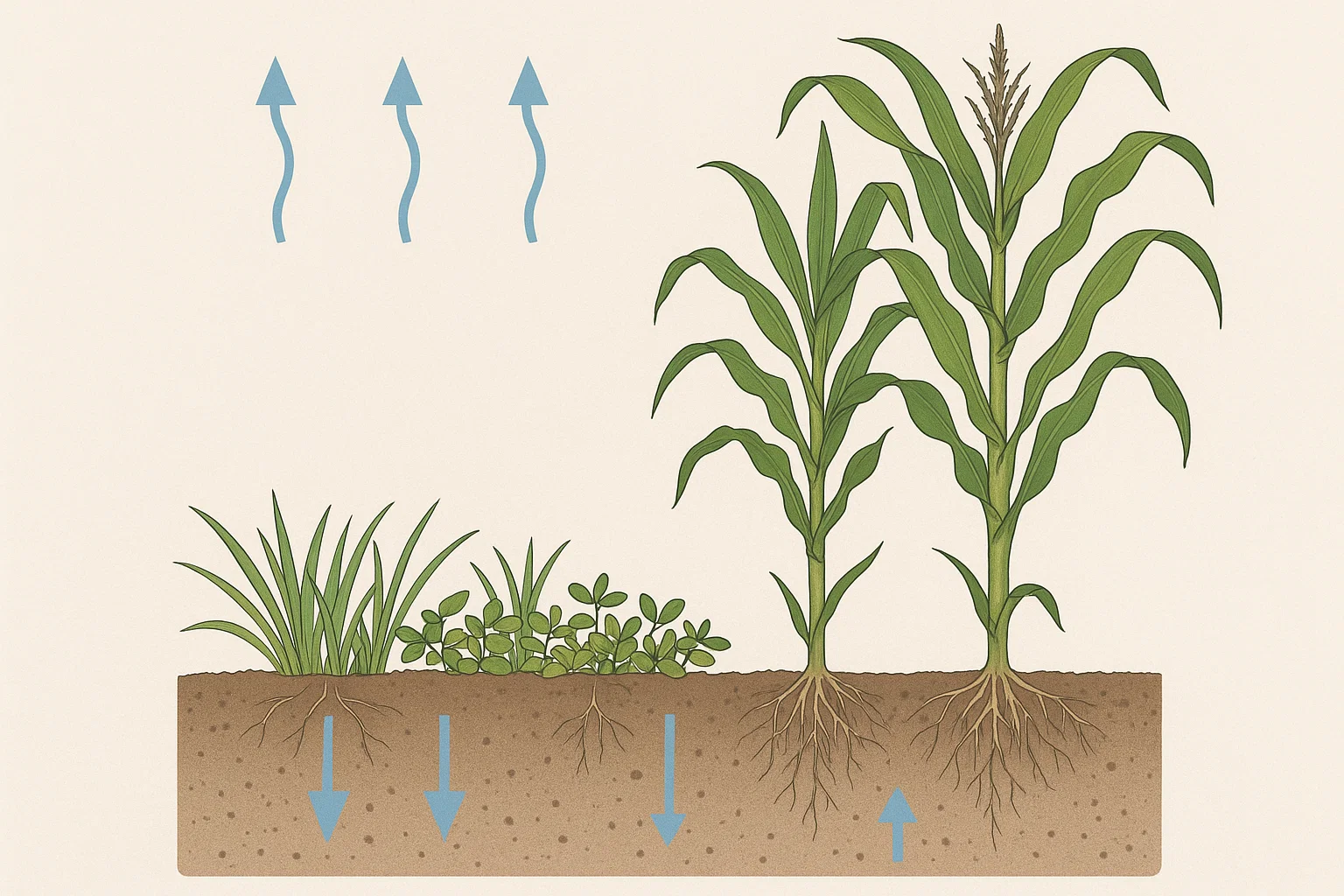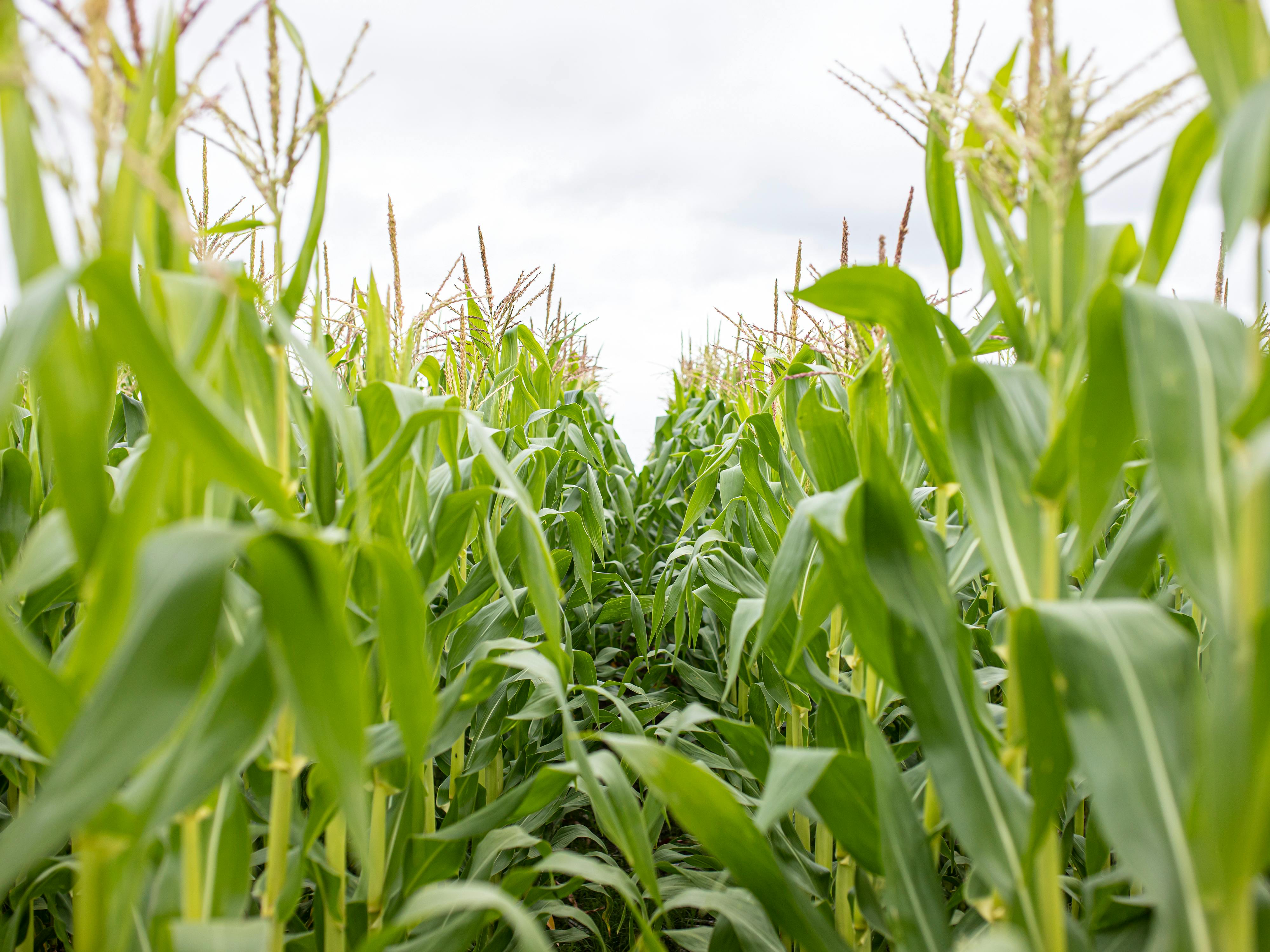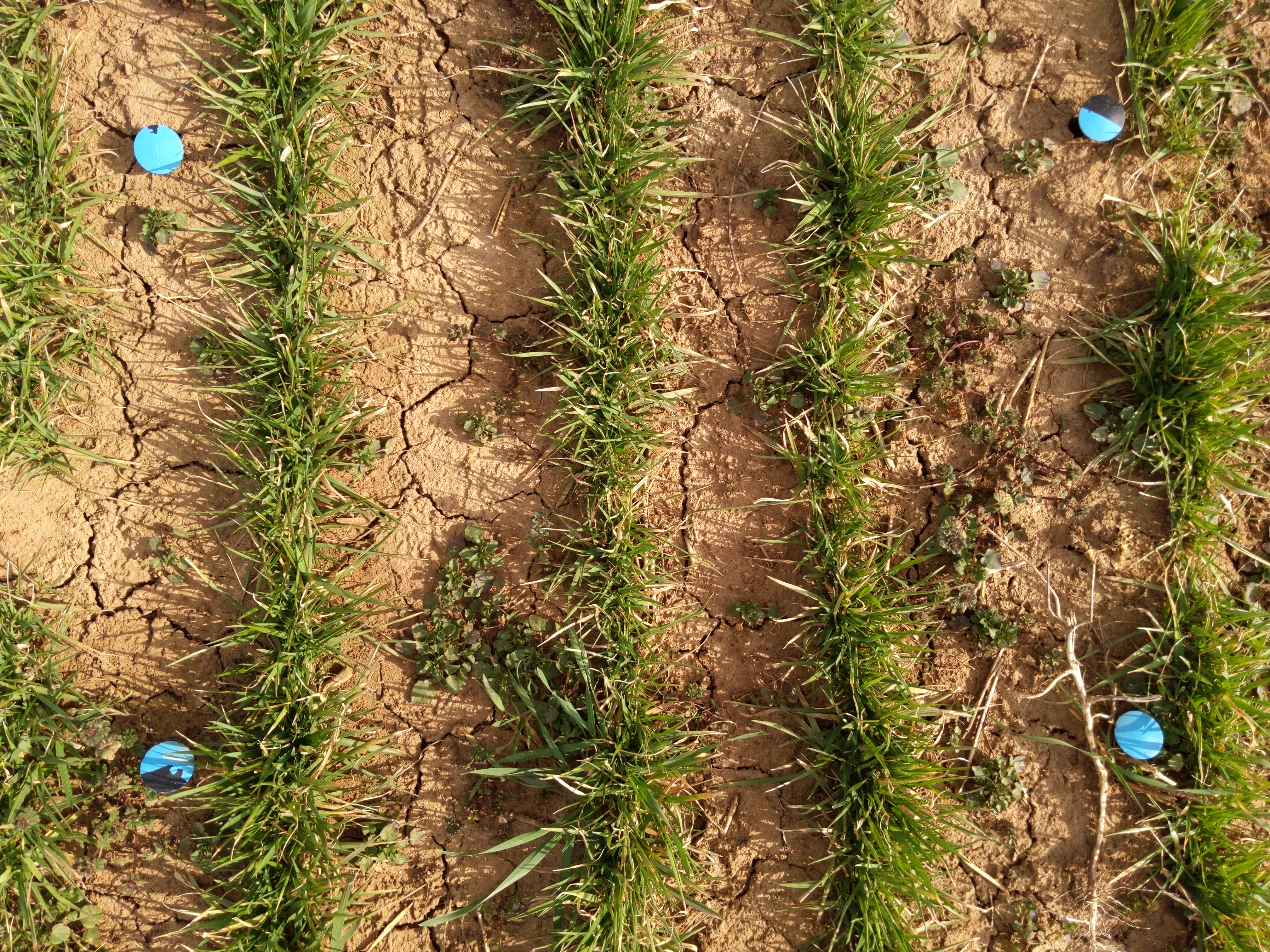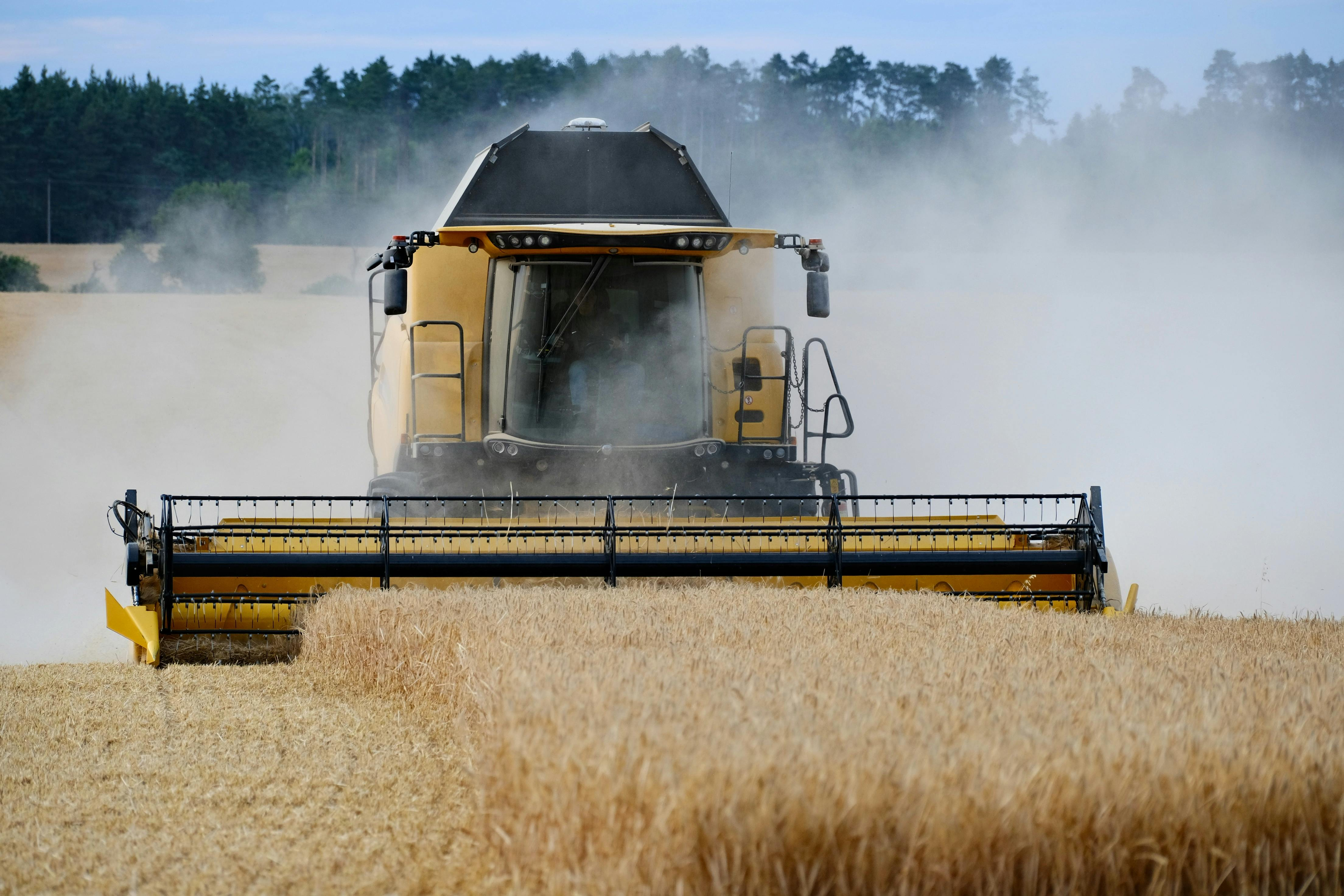General Introduction
Annual commodity agriculture relies on practices that leave land exposed to degradation for multiple months of the year. Uncovered soil in fallow croplands is susceptible to erosion and nutrient leaching. Through wind and water erosion, millions of tons of soil are lost from working lands in the Midwest every year. Soil loss has both economic and environmental implications, with soil loss costing the US an estimated $37.6 billion annually and contributing to environmental crises like the dead zone in the Gulf of Mexico (Rabotyagov et al. 2014; Uri 2000). Degraded soils have decreased nutrient content, lowered water-holding capacity, high levels of soil compaction, and diminished physical properties (Baumhardt, Stewart, and Sainju 2015). Poor management choices and prioritization of yield over ecosystem wellbeing has damaged croplands worldwide (Pravalie et al. 2021).
One strategy to mitigate soil degradation is cover cropping, which provides multiple benefits including nutrient retention, erosion reduction, increasing soil organic matter, and improved soil structure (Chen et al. 2022). Although proven to mitigate erosion and nutrient loss, farmers often choose not use cover crops for reasons, including: lack of information, too few growing days for establishment, or increased management complexity (Ingram 2023). To overcome these limitations of annual cover crops, some have proposed perennial ground cover (PGC), which would provide year-long coverage on crop lands with a single planting (Moore et al. 2019). Examples of existing systems include PGC alongside perennial crops in alley cropping practices as well as in vegetable production (Kolota and Adamczewska-Sowinska 2013; Gamble et al. 2019). Intercropping trials include annual grain production, where there is a great need for more sustainable land management (Flynn et al. 2013; Martin, Greyson, and Gordon 1999; Eberlein, Sheaffer, and Oliveira 1992; Zemenchik et al. 2000).
The USDA-funded project Regenerating America’s Working Landscapes to Enhance Natural Resources and Public Goods through Perennial Groundcover (RegenPGC) is developing a perennial groundcover to enhance ecosystem services in the Midwest. This project is still in its development stage, and PGC has been applied in limited field trials aimed at working through a variety of implementation challenges before encouraging large-scale adoption (Bartel et al. 2022; Flynn et al. 2013; Kimmelshue, Goggi, and Moore 2022). Management of the groundcover is important for limiting resource competition, especially water, nutrient, and light resources. Other concerns exist around grass establishment, suppression during the growing season, and potential pest refugia (Bartel et al. 2022; Moore et al. 2019; Schlautman et al. 2021). There is an added layer of complexity when another species is introduced into the growing space, so understanding each sphere of interaction will ensure a design that is mutually beneficial to both ground cover and crop (Moore et al. 2019). A method to examine these interactions is through crop models, where one can explore management decisions without the time and expense of in-field trials.
Process-based crop models are helpful in projecting yield with theoretical changes to the environment. They allow users to better understand the implications of management choices or uncover potentially unforeseen relationships and reactions within the system. Models can broaden one’s understanding of a system and help formalize and quantify relationships in the ecosystem. Within a model the complexities of a natural system are simplified into equations and priority is given to the parts which are under study. Crop models have a variety of applications, including forecasting yield, simulating the effects of climate change on cropping systems, exploring land use change, or investigating soil nutrient dynamics, to name a few (Ewert et al. 2005; Rehman et al. 2023; Singh et al. 2014; Teixeira et al. 2018; Y. Zhang et al. 2013). Models can help inform both management choices and policy decisions, leading to more informed decisions about land use.
As one would expect, there are different models for different uses. In the case of PGC, intercropping capabilities are integral for modeling the system, but most crop growth models do not allow the simulation of intercropping. Some existing models have been modified to roughly simulate intercrop, but without explicit formalisms built into the model (Della Chiesa et al. 2022; Kimball et al. 2019; Pierre et al. 2023), while others models like APSIM are currently being modified to incorporate intercropping (Berghuijs et al. 2021; Lagerquist et al. 2024). The STICS model, however, already incorporates intercropping formalisms and has been used in a variety of conditions, making it the most mature intercropping model suitable for simulating PGC (Brisson et al. 2004b; Kherif et al. 2022; Traore et al. 2022; Vezy et al. 2023).
The focus of this research is on resource competition for water between corn and PGC, in this case Kentucky Bluegrass (KBG). The crop model STICS is used to examine the water balance of the system. Understanding the water demands of PGC is crucial for developing a non-competitive system. The PGC species should occupy a different niche within the system, so it is not competing with the primary cash crop, potentially threatening yield. These niches can include things like seasonality of the species, as well as physiological traits such as aboveground biomass and root growth. Modeling the water balance for corn and KBG will provide insight to crop yield, since water stress during particular stages of corn development has direct impact on yield (Mladenova et al. 2017). Water stress is just one of many potential competitive interactions between KBG and corn, with nutrient and light resources also being areas of concern. These modeling efforts will help growers know in what scenarios and at which point in the season water competition is highest and poses the most risk for the crop. Early season water uptake by KBG may reduce soil moisture and restrict corn growth in the spring, potentially decreasing grain yield. Alternatively, experiments have shown groundcover increasing infiltration and soil moisture retention throughout the growing season (Baker et al. 2022; Wiggans et al. 2012a). We will examine STICS’ ability to simulate PGC effects on water balance to determine its efficacy in modeling the PGC system and as a way to explore under what conditions competition for soil moisture negatively impacts corn grain yield.
The STICS model is a daily timestep model driven by climatic data, soil type, and management decisions. Model outputs include crop development and water and nitrogen balances (Brisson et al. 2004b). The model comprises a set of standard formalisms found in other crop models but is unique in its adaptability to many crops (Brisson et al. 2004b). STICS was adapted for intercropping and utilizes a simplified system that models resource partitioning by breaking the crops into dominant and understory canopies, with a sunlit and shaded subcategory for the understory. The amount of light resource acquired by each canopy section drives the plant growth, water, and nitrogen balances (Brisson et al. 2004b).
The standard version of STICS includes parameterizations for a variety of crop species, ranging from banana, to corn, to miscanthus. KBG is not an existing plant file in STICS, but analogous plant files are available. Tall fescue, another cool-season grass, is a species suitable as a starting point from which to begin KBG calibration. There are some important morphological differences between KBG and tall fescue that affect water dynamics in the system. Most important is the root system, which is deeper in tall fescue than KBG and thus can access more moisture at depth and creates more competition for corn. Many parameters between the grasses are analogous, but to simulate the PGC system using KBG a novel plant file was required.
To adapt STICS to a novel plant file, multiple years of data are needed. Agronomic data for turfgrass data are limited, and what are available tend to focus on factors that are important to turf such as visual metrics of greenness rather than physiological and morphological measurements. Existing PGC field trials provide very limited measured data on the groundcover, focusing instead on the main crop measures such as yield or the shade-avoidance response from corn (Bartel et al. 2022; Wiggans et al. 2012a). PGC field trials do not currently have sufficient data to calibrate the STICS model to KBG. A bucket lysimeter study of KBG growth in Loveland, CO (Y. Zhang et al. 2013) includes measurements of evapotranspiration (ET), deep percolation, N content of grass clippings, and aboveground biomass from clippings. These data are from a highly maintained KBG turf field that had regularly mowing, irrigation, and fertilization. PGC, in contrast, receives little management throughout the season. It would be preferable to calibrate with PGC field data, but these were the best data that could be obtained.
Once STICS is parameterized to KBG, the new plant file can be used in the intercrop simulation with corn. Data from a study near Ames, IA by Wiggans et al. was used to evaluate model performance and determine whether STICS is a suitable model for capturing trends in the water balance of a corn-based PGC system (Wiggans et al. 2012a; 2012b).
Funding:
RegenPGC is supported by the Agriculture and Food Research Initiative Competitive Grant no. 2021-68012-35923 from the USDA National Institute of Food and Agriculture. Any opinions, findings, conclusions, or recommendations expressed in this article are those of the authors and do not necessarily reflect the view of the U.S. Department of Agriculture.
Continue reading:
Simulation of the water balance in a perennial groundcover corn intercrop with the STICS crop model



